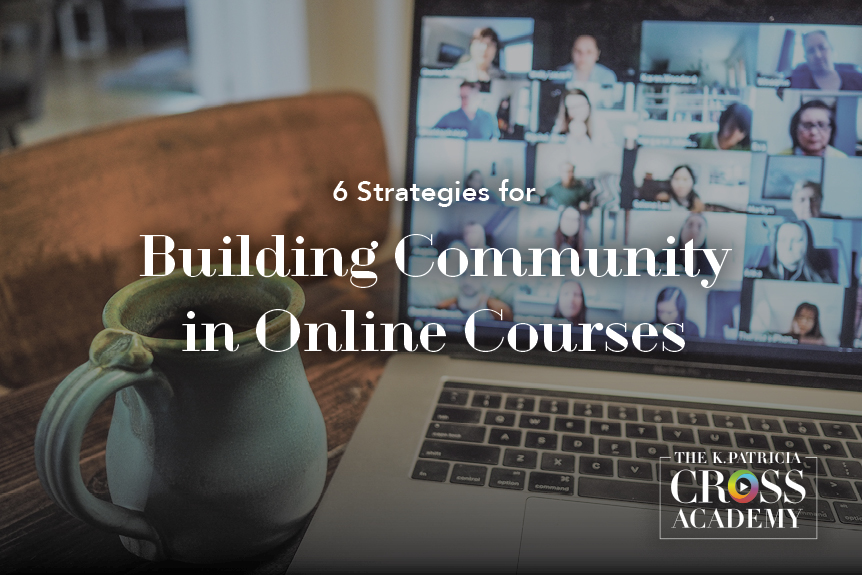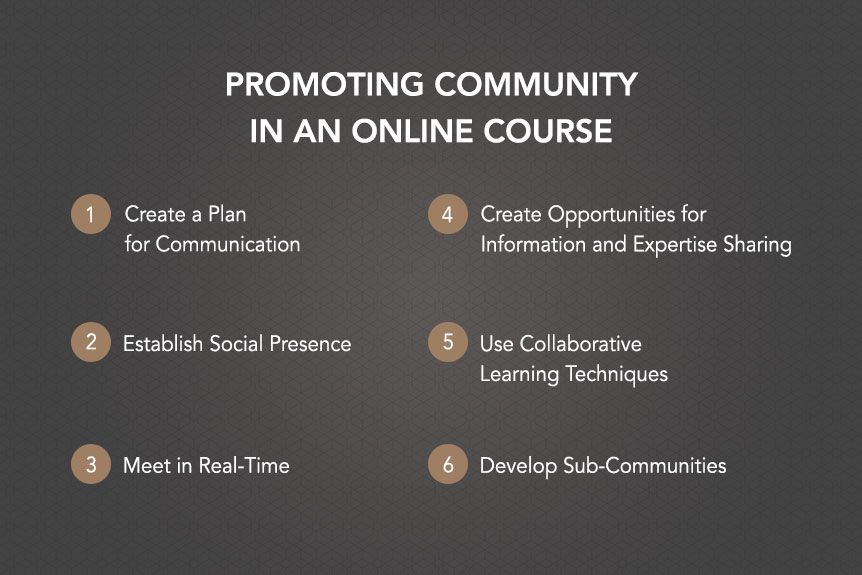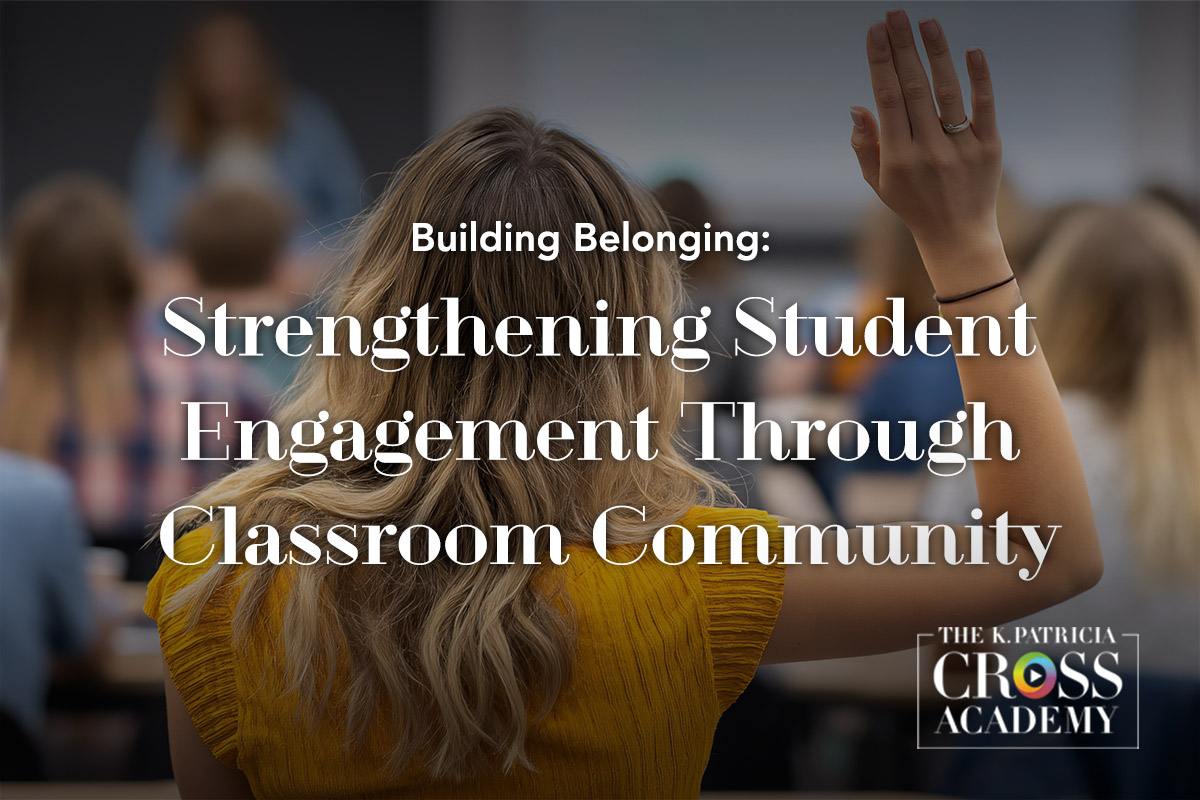
Sometimes, a group of students in a given class just seems to gel. They connect, work well together, and encourage and support each other. Sometimes a group of students does not gel. They barely interact, they don’t work together, and while they may not actively discourage each other, encouragement is not exactly forthcoming either. It can be difficult to determine what causes a group to respond one way or the other, but at least some of it can be attributed to the concept of community. Establishing community helps a group of learners bond and work well together. Community is particularly important in online courses given the potential for students to feel isolated and alone.

When we teach online, community forms and happens differently than when we teach onsite because the connection is mediated by technology. For example, interactions happen predominantly by text rather than physical presence and there are different markers of who has more or less influence in the group. Online, community is not worse than onsite – indeed, some educators argue that connections can be deeper online than onsite – but it is different. The manner in which online community develops, however, has implications for our roles and responsibilities as teachers.
It can be challenging to achieve community in an online course and to know whether it has developed, in part because we do not yet have a good sense of what a strong group dynamic looks like in online courses. After all, it can happen under the radar of the course, through private texting and email, for example. If we are not included in the communication loop, we can feel that an online course does not have the same level of community as an onsite one does, even though there may be a vibrant one forming in backchannels.

Community is more than participation; it requires moving from participation to engagement, involvement, and action. Thinking through what appeals to us about other communities, whether onsite or online, can provide us with important clues about how to establish community online. There are several strategies we can use to promote community in an online course.

1. Create a Plan for Communication
Communication is essential to community, and it is a good idea to model effective communication from the very start of the course. Create a calendar of when you will contact students, individually or as a group. Communicating at the start of each module with announcements or texts can also be beneficial. Touching base before high stakes assignments is also important. A framework of frequent and effective communication is the first step in encouraging community.
2. Establish Social Presence
Social presence, or the sense that individuals have that they are interacting with real people, is an important concept for developing community. Several related factors influence social presence. These include immediacy – the psychological distance between communicators; interaction – when actions affect each other; and intimacy – the notion that individuals will adjust their behaviors to maintain equilibrium. To develop and foster social presence, consider the following:
- Creating an introductory video and having students do the same; these can be simple smartphone videos where everyone introduces themselves and shares 2-3 facts about themselves.
- Giving students reason to come to the course site often.
- Letting them share work that represents them.

3. Meet in Real-Time
It’s not always possible (or even desirable) to schedule synchronous meetings, but interacting at the same time can encourage community. Students get to know each other, recognize faces and names, and share information. Consider having several synchronous sessions on the same topic, all at different times of the day and week so everyone can schedule one. Alternatively, make the sessions optional.

4. Create Opportunities for Information and Expertise Sharing
One thing that draws us to communities is the rich resources that individuals provide. Providing opportunities for students to share information is a useful strategy for helping to develop community. A few options include:
- Create study groups for the course. Assign students to small groups. Suggest that they use the learning management system to work together. Doing so can help them learn to work in groups and to make connections with their fellow students.
- Include a “relevant resource” section for the course. Ask students to post information that’s happening in the world that is related to the course content. If students see the importance of the content, they will be more engaged with it. Online articles, essays, YouTube clips, and so forth can add additional value. You can post in this section as well. Consider trying out Contemporary Issues Journals. In Contemporary Issues Journals, students look for recent events or developments in the real world that are related to their coursework, then analyze these current affairs to identify the connections to course material in entries that they write in a journal. Ask students to share their ideas in a central forum.
- Create a common space. Instructors can encourage informal interactions by creating a common space such as a student lounge for discussion.
5. Use Collaborative Learning Techniques
Collaborative learning requires students to work with each other, which can help reduce feelings of isolation. In addition to simply being glad to know that others are in the same boat, many online students appear to value interacting and forming relationships with peers. Getting to know their peers in an online environment can improve students’ overall experience. Online collaborative learning provides a solid foundation on which such relationships may be founded. Consider collaborative learning techniques such as the following:
Jigsaw
In Jigsaw, students work in small groups to develop knowledge about a given topic before teaching what they have learned to another group.
View main video here: View Technique →
View online adaptation here:
Paper Seminar
Paper Seminar provides a framework for meaningful discussion centered on student work.
View main video here: View Technique →
View online adaptation here:
TAPPS
In Think Aloud Pair Problem Solving, students solve problems aloud to try out their reasoning on a listening peer.
View main video here: View Technique →
View online adaptation here:
6. Develop Sub-Communities
Some online learners may be hesitant to participate or share if there are too many members. Developing sub-communities can help. These smaller groups can provide a more personal experience and connect individuals with similar interests. Separate discussion forums or small groups meeting in break out rooms within videoconference sessions can help.
In conclusion, community can be critical to student success and satisfaction in online courses. Instructors can create opportunities for community in the design of the course, the communication, and the activities they include. Creating these opportunities is likely to prove well worth the effort.
Sign Up for Our Newsletter
Email us to receive information about new blog posts.
Reference:
Major, C. H. (2015). Teaching online and instructional change: A guide to theory, research, and practice. Baltimore, MD: Johns Hopkins University Press.
Suggested Citation
Barkley, E. F., & Major, C. H. (n.d.). 6 strategies for building community in online courses. CrossCurrents. https://kpcrossacademy.ua.edu/building-community-in-online-courses/

Engaged Teaching
A Handbook for College Faculty
Available now, Engaged Teaching: A Handbook for College Faculty provides college faculty with a dynamic model of what it means to be an engaged teacher and offers practical strategies and techniques for putting the model into practice.





